
CPU coolers compared, page 4
Review date: 26 May 2001. Last modified 03-Dec-2011.
OCZ Dominator
Whoa, baby.
On the bottom of this cooler is an all-aluminium heat sink with a nice flat base, straight skived fins shaved from the base block, and an easy to attach two-part clip. The sink looks very similar to the ones on the Bitspower coolers I've seen, and uses the same type of clip. Which is a good thing; the Bitspower coolers work very well, and the clip is easy to use.
On top of the modest-sized heat sink, though, sits a 38mm high Delta FFB0612SHE "focused flow" fan, with a free-air rating of more than 43 cubic feet per minute of air flow. And a finger guard, which is there for a reason.
None of the Delta FFB series fans actually have a blade assembly that's as thick as their hefty frames. Instead, this one's got a quite normal looking seven-bladed impeller, which is sitting on top of a fixed flow director. The director looks like another nine fan blades that've been fixed to the frame and the hub of the fan, and angled in the opposite direction to the spinning blades.
This fan is another 7000RPM noise-maker; it is not going to please anybody that wants a silent PC. The flow directing vanes interact with the impeller to make the FFB0612SHE louder than the average 7000RPM unit, but it's still not the noisiest of Delta's 60mm products. That'd be the FFB0612EHE, which looks the same but spins at 8000RPM.
There's a 0.83 amp current rating on this fan's sticker, which would make it a ten watt fan. The rating's peak draw, though; when I measured its constant running current, it was down around 7.2 watts.
Which is still rather impressive. Anybody thinking of plugging this three-wire fan into one of the fan headers on their motherboard should make sure beforehand that the board can handle a fan this powerful. If in doubt, use an adapter to plug the fan into a four-pin connector from the power supply, instead.
On the Dominator's all-aluminium heat sink, this big fat fan delivers top-flight performance, with a 0.53°C/W result. That's a very, very good result for an air cooler, and beats most of the copper exotics. At OCZ's suggested price of $US15.99, the Dominator was a complete bargain - but now it's been superseded by the Dominator 2, below.
The Dominator is a loud little sucker, though. I shudder to think how noisy the 8000RPM version of this fan must be. But it certainly works. Recommended.
OCZ Dominator 2
OCZ's Dominator 2 - actually, OCZ call it the Dominator2 on their site, but typographical affectations aren't really my thang - is obviously related to the original Dominator. It's got a skived heat sink with a nice clip, it's got a high power fan, and it's got a bargain price. OCZ have replaced the original Dominator with this new model, now, and they're selling it for $US16.99, with a 7000RPM Y.S. Tech fan on it.
The Y.S. Tech fan's lead has been hacked thusly. The power wires go to a four pin pass-through connector, which is a very good idea, because the more-than-six-watt power draw of this fan is not something that all motherboards can handle through their standard three-pin connectors. But you still get to monitor the fan speed, because the three-pin connector's been retained - it's got nothing but the tachometer wire on it, now, but that's enough.
The three pin connector won't do anything if the board monitoring it doesn't share an earth with the power supply that's actually running the fan, but if you're not fooling with outboard PSUs or something, that won't be a problem.
OCZ were good enough to include their optional FFB-series 7000RPM Delta fan with the Dominator 2, as well. They don't have pricing up for this option at the moment, but it won't be greatly more expensive, and this fan is likely to be a bit better balanced than the Y.S. Tech, and slightly more powerful. The Y.S. Tech fan on the Dominator 2 I got was buzzier than the one I've used for tests before; it's a crapshoot whether you get a good fan or not, when you buy fans that aren't factory-balanced.
Here, by the way, are the flow director fins on the Delta fan, which account for its 38mm height.
With the Y.S. Tech fan, the Dominator 2 scored noticeably worse than the original Dominator with its Delta fan - 0.61°C/W, versus 0.53°C/W for the older model. When I swapped the Delta fan in on the Dominator 2, it managed a better showing - 0.55°C/W. That's close enough to the earlier cooler that it's floating around my test rig error margin; I wouldn't be confident saying that either of these coolers is better.
The new Dominator, like the old one, is a loud, cheap, effective cooler for the overclocker on a budget. It's not a great leap forward from its predecessor; it might actually not work quite as well. But the difference, if there is one, is slight, and the price/performance ratio is still excellent. Recommended.
OCZ Glacier2
The Overclockerz Store has this cooler at a list price of $US19.99, reduced to $US9.99 as I write this.
For ten US bucks plus shipping, the Glacier2's a very impressive piece of gear.
Its most obvious feature is this copper inlay in the base (here, it's still got its thermal gum square covered by its protective wrapper). But it's also got a medium-high power fan, and a user-friendly clip with a plastic tab on it for easy gripping. The easy-grip clip is hardly a world-shattering technological breakthrough, but anything that saves you from having to jam a screwdriver down in the direction of your motherboard is, if you ask me, well worth having.
At 0.79°C/W, the Glacier's not a thrilling performer - but the price is right.
OCZ Gladiator
OCZ's pride and joy, the Gladiator is an all-copper exotic for a remarkably reasonable price. It's on sale at the Overclockerz Store, as I write this, for a mere $US18.99.
For your money, you get a plethora of super-thin copper fins and a high power fan - a 6500RPM "Top Motor" in the basic Gladiator, or for $US6 more a slightly higher power Delta that draws less current than the Y.S. Tech opposition but seems to move just as much air. And there's a very tidy hinged clip that's pretty much the best I've seen, beating even Alpha's retention mechanism.
Plus, it's a cute pink-copper colour.
There's a bit of a trick to using the Gladiator's clip properly. Most of the clip is two vertically aligned bridge pieces that fit between the super-thin fins of the heat sink. There's no vertical flex in these pieces.
If the articulated, to-be-attached-second part of the clip isn't pulled out from the body of the heat sink, there's no spring in the clip at all and you can't attach the thing. Do it properly and it's easy, but active-cooling enthusiasts who put a Peltier element under their cooler - and probably a heat spreader under that - might not be able to clip the Gladiator on.
I got the top-spec $US24.99 Gladiator with the Delta fan for review, and it performs as well as it ought to, considering its high-pose style. At 0.57°C/W, it's the best unmodified air cooler in this comparison. The only thing it lacks is a finger guard on the hand-smashing high-speed fan.
This little trucker's noisy - as is anything with a 6800RPM+ fan on it - but it works very well, and it's well priced, too.
Silver plated OCZ Gladiator
Ooh la la.
OCZ have taken the heat sink they use for their high-scoring Gladiator cooler and electroplated it with silver, to create this shinier version. It's got a finger guard on the fan now, too.
The plating looks good from a distance, but looking at it close up, you can see that it's very thin, and fades out a bit on edges.
The silver plating brings the Gladiator's price up to $US34.99, and it's got the same high power Delta fan as the top-spec regular Gladiator.
What difference should the silver make to the cooler's performance?
None whatsoever.
Point one - a super-thin plating of anything won't make much difference to the performance of a cooler. There's just not enough there to matter, unless it's some sort of Larry Niven thermal superconductor.
Point two - silver's a better thermal conductor than copper, but only just. The difference is really too small to matter, even for a thick layer.
There's something to be said for putting a chunk of fine silver on the bottom of a cooler, because pure silver is very soft, and will presumably mould itself to the tiny irregularities of the top of the CPU, giving you a really good thermal contact. But plating a cooler with the stuff is a purely cosmetic change.
The Delta fan on the cooler I got for review has a slightly buzzy bearing, which might have something to do with the fact that it only scored 0.59°C/W when I tested it - an excellent result, but not quite as good as the plain Gladiator. The inaccuracy of the test rig may have something to do with it as well, though.
Personally, I prefer the look of a plain copper cooler to silver plate. But if your particular hopped-up PC has a lot of mirror-plate in it, this cooler ought to suit your technological decor.
OCZ Goliath with 80mm Delta fan
At first glance, you might think this was a pretty beefy 60mm fan jammed onto some little chipset cooler, or something.
It's not.
That's a quite hefty all-copper heat sink there on the bottom, actually, and the fan on the top is the most powerful unit I've seen on a CPU cooler so far.
OCZ's Goliath is another in their long line of reasonably cheap but top-performing coolers, and this contraption is something of an Extreme Cooling Flagship for the company, as I write this.
The heat sink hiding under the fan has a ton of fin area and a copper-slab base...
...in which you can, naturally, see your face.
The Goliath heat sink is, here, topped by an 80mm Delta FFB0812EHE +5 Fan Of Outrageousness. It's not quite as high-pitched as a high power 60mm fan, but it's substantially louder. If you have functioning tympanic membranes, you won't want to sit next to it.
To emphasise the fact that this isn't really a product that anybody's expected to buy, OCZ provided this cooler to me with no finger guard over the fan. That's a bad enough idea with a two watt 60mm unit - blade-corners can easily cut you, and unguarded fans can saw through wayward cables, too. But leaving the finger guard off probably violates industrial health and safety regulations, with this monster.
The FFB0812EHE has a sixteen point two watt nominal power figure. It vaants to suuck your bloood.
Under the fan there's a slimline see-through adaptor funnel, which keeps the total height of this cooler, from base to fan-screw-tops, a little under 90mm.
You attach the Goliath onto your CPU with a full three-hooks-on-each-end one piece spring-clip, which has both a finger-tab and a screwdriver slot and holds firmly, but not too firmly. It wasn't a big deal for me to hook the cooler on, despite its monster fan.
Adapting 80mm fans down onto heat sinks made for 60mm ones is, inherently, not terribly efficient. But if you're starting with a super-performance air-shover like this Delta you can't help but get decent results. Which this cooler does; it sat on the low side of 0.57°C/W, about as good a result as I've seen from any cooler. Yes, some coolers tested lower, but there's enough fuzz in my testing system that this could well be the best of the lot. You'd blooming want it to be, considering its awe-inspiring noise level.
When you use a setup like this, you're getting as close as possible as an air cooler can get to having a magic device on the fan side of the heat sink plate that sucks heat away to nowhere. The limiting factor becomes the ability of the plate to deliver heat to the fins, not the ability of the fins to stay at ambient temperature. In other words, you're a long way up the diminishing-returns graph.
If you want better cooling than a normal 60mm-fanned Goliath can give you, you really want water cooling, not a hilariously loud air cooler like this. I can tolerate a rackety computer better than most people, but I would not want this thing yowling away under my desk.
The regular $US29.99 60mm-fan Goliath, though, looks like an excellent product, as usual for OCZ. That's a noisy cooler you can buy with confidence; it's loud, but many people will find it tolerable. If you want something quieter, a more modest fan or a speed limiter will give it to you. The Goliath heat sink is great, and should deliver very good performance, realtively speaking, with any fan.
OCZ Goliath SE
Behold, the Goliath For Sane People.
OCZ's Goliath SE has exactly the same heat sink and retention mechanism as the, um, extreme version reviewed above, but it packs a much more sensible 80mm fan, which is thermally controlled to keep the noise down when maximum cooling power isn't needed. It sells for around $US30, ex shipping.
This little blue temperature sensor sticks out of the side of the Goliath SE's fan motor assembly. You can't relocate the sensor - well, not without some surgery - but you probably won't want to, because this fan is set up to suck air up through the heat sink, not blow it downwards. That means that the sensor monitors the temperature of the air after it's been warmed up by the CPU, so the fan won't slow down inappropriately just because the intake air temperature's low.
Given the sensor location, I found it hard to judge the exact temperature response of the fan, but its run power seems to peak at about 3.9 watts when the sensor temperature's above 40 degrees Celsius. At that speed, it sounds like a medium power case fan, as you'd expect. Not inaudible, but far from offensively loud, at least by the standards of people who already run an extra fan or three to move air through their PC case.
Minimum fan power was little more than one watt. At that speed, the fan was of course barely audible. You're not likely to get it running that slow in a real PC, though, unless your CPU's idle and the ambient temperature is pretty darn low.
It's impossible to give one performance number for a cooler with a thermally controlled fan, but for what it's worth, my 50 watt heater pushed the Goliath SE to 0.68°C/W with a 22°C ambient temperature. The temperature inside an actual computer case is likely to be higher than that; when I heated the sensor while testing, the cooler's performance improved to 0.66°C/W. So let's say 0.67°C/W, overall.
That's not a thrilling result, but it's not even 20% worse than the performance of the Goliath with the giant Delta fan on it. And this version of the cooler is a lot quieter.
For the money, the Goliath SE's a great product. If you're an overclocking maniac then you'll want something louder and more effective, but for almost all users, particularly those who want a cooler that doesn't make a racket, the SE will do nicely.
OCZ Goliath 2
The Goliath 2 continues OCZ's simple but effective CPU cooler design philosophy. Take a quality heat sink, stick a high powered fan on it, and sell it for a reasonable price.
This Goliath 2 is another extreme example of the OCZ Way, because they've topped the thin-fin copper heat sink with another Delta FFB0612SHE, the same as the one that graced the Dominator I reviewed. I'm not sure of the price of this version of the Goliath 2, but it ought to be about $US30.
With a nominal 9.96 watt rating, the FFB0612SHE is a hand-shredding neighbour-annoyer if ever I saw one. The Goliath 2 has a finger guard to minimise the first problem, but the second one remains. This really isn't a fan for people who care, even slightly, about peace and quiet.
It definitely works, though. The super-fanned Goliath 2 turned in an outstanding 0.51°C/W result. That's up there with the best Socket A/370 air coolers I've seen.
The performance of the Goliath 2 has to be helped by its pleasingly flat copper base. The cooler comes with a protective paper strip looped over the base, to keep the contact patch area from harm. You can see the shinier strip where the paper was.
That said, though, you probably don't want the ten-watt-Delta version of the Goliath 2. The Goliath 2 SE looks like a more sensible option. The SE uses the same thermally controlled 80mm fan as the previous Goliath SE, and I'd expect it to deliver a thermal resistance figure around 20% higher than this Delta-fanned unit.
Of course, since the SE fan is thermally controlled, its performance will vary with the temperature of its intake air. Which means it's not easy to pin it down to an exact figure. I'd still put a small amount of money on the Goliath 2 SE behaving more or less like a cooler with a 0.60°C/W-ish rating, though. That's more than acceptable for all but the nuttiest overclockers, and no jet engine noises should be emitted.
The Goliath 2 is an excellent performer, with an OK price. I wouldn't drop big bucks to order one internationally if you don't have a local vendor. But if you do, check this cooler out.
Power Cooler PCH075
Well, there's a certain funkitude to this thing, isn't there?
This Power Cooler novelty act has a fairly normal overall design. Fan on top, heat sink underneath. But it's got four unusual features.
First, its copper core. There's a copper slug embedded in the middle of the heat sink, and it's just big enough to pretty much match the die size of a Socket 370 or Socket A CPU.
The above picture also shows the peculiar clip the PCH075 uses. It's a twist-lock design, but better than Thermaltake's Golden Orb version.
You hook this cooler on as normal, which is very easy when it's in its loosey-goosey unlocked position. Then you turn a separate locking ring, which has a pair of finger-push tabs sticking out of the sides. The ring's easy to turn, locks the cooler down properly, and doesn't turn the heat sink significantly. The Thermaltake design locks by turning the whole heat sink, grinding it down onto the processor.
Get a load of that heat sink. The outer, gold-anodised piece looks heat-sinky, but it's really just an air-channelling shroud, and it's a very solid press-fit onto the inner spiral fins. It's pressed on hard enough that a couple of the inner fins are bent and there are little tabs of aluminium swarf sticking out in a few places; you are not going to pull this thing off again by hand.
What's the fourth unusual feature? The fan.
Power Cooler use this "Turbo Fan" on all of their current coolers. It's got two layers of separate offset blades, and it looks sort of like what you'd get if you piled two low profile 60mm fans on top of each other, turning one so its blades lined up with the gaps in the other one.
This "blade stagger" is apparently a noise reduction feature, and can also be seen coupled with bizarre asymmetric designs in things like radiator fans that look as if they ought not to work.
Whether this novel design delivers much lower noise, or much higher air flow, I'm not sure. It's not very loud and it moves a decent amount of air for its specs, but it's not a very high power fan, and is obviously inferior to full-height 7000RPM units. But, for the racket they make, you'd want them to be good air movers.
Compared with other fans with similar dimensions and the same noise level, the Turbo Fan certainly seems to be just as good, and may be better. It moves more air than you'd expect for a fan of this thickness, because although it's got normal 60mm fan mounting holes, the rotating part itself has a larger diameter than normal - more like 70mm. There are curved bulges in the frame to accommodate the bigger impeller.
All the flashy design in the world's of little interest without decent performance, though, and the PCH075's not an awfully effective cooler. It managed 0.68°C/W, which isn't disgraceful, but isn't very exciting either.
Hey, it's easy to attach, it looks like a battlemech's navel ornament, and it doesn't make much noise. Three out of four ain't bad.
Power Cooler PCH113
The PCH113 is, essentially, a PCH075 without the copper core.
It's got the same basic design as the copper-core version, but with a flat anodised aluminium base plate. The clip's the same, too.
Yes, it does have "PAT. PANDING" stamped on it. All hail Chinglish.
The same spiral fins, but without the copper-filled well in the middle. Interestingly, this PCH113's shroud is pressed on flush with the top of the heat sink; the shroud of the PCH075 I got for review stands up a bit above the spiral fins.
How's the PCH113 perform? Not too badly - only slightly worse than its copper-cored cousin, in fact. 0.70°C/W.
That's not a very exciting result, but it's not rubbish, either, from a decently quiet cooler like this.
Power Cooler PCH123
The design specification for this cooler seemed to include a requirement that the heat sink's profile be made as knobbly and spiky and generally baroquely interesting as possible. And it is. In the quest for more surface area in this otherwise unremarkable all-aluminium heat sink, Power Cooler have given it lots of corrugations and twiddly bits, so it looks kind of like a set of extruded Victorian iron fence posts, or perhaps an abstract wallpaper pattern turned into metal.
On top of the knobbly heat sink there's another of those Power Cooler turbine-fans, and the whole thing's held onto the socket with an OK two-part clip, sort of like a Global Win clip done properly.
You can't expect a whole lot from an all-aluminium sink with a medium power fan, though, and the PCH123 is no miracle worker. At 0.70°C/W, it matched the far fancier PCH113.
Power Cooler PCH137
If the heat sink on this cooler looks just a little familiar to you, there's a reason. It's exactly the same as the one used by the OCZ Gladiator. Same copper surround, same super-thin fins, same stiff but fairly friendly clip. And a similarly pleasing price, considering the all-copper construction of the heat sink - Crazy PC had this cooler listed for $US26.95 when I first wrote this, but they stock the Gladiator instead now.
Crazy PC didn't provide the cooler, by the way; all of the Power Cooler products in this comparison came straight from the manufacturer in Taiwan. I'm not sure where you can buy the other Power Cooler products - the smaller stores that stock them tend to come and go like mushrooms - but just doing a Web search for the model numbers usually turns up a few prospects.
OCZ put a high-power noisy Delta fan on this heat sink, and get excellent performance out of it. Power Cooler use one of their Turbo Fans. The result is the best performance of anything from the Power Cooler range, with the same pretty low noise level as the rest of their Turbo Fan coolers. The stock PCH137 scored 0.62°C/W - which makes it pretty much a serious overclockers' cooler, without it having to make a noise like a gas turbine motorcycle for hamsters.
When I replaced the Power Cooler fan with my high power Y.S. Tech unit, the PCH137 managed 0.54°C/W, which is a hair better than the similarly specified Gladiator achieved, but you can put that down to the inaccuracy of the test rig. With a 7000RPM fan on it, a PCH137 is a top-spec OCZ Gladiator.
Given the bargain-basement $US34.99 price of the Gladiator with its Delta fan, all other things being equal, it's the better buy. Provided you can live with a computer that sounds as if a small hair dryer's trapped inside it.
But if shipping from OCZ dealers to where you live costs a lot, and/or you see a PCH137 for cheap somewhere, I recommend grabbing it. It's the exact same thing with a more family-friendly fan, and it's easy to get some slightly longer mounting screws and a higher power fan if you want to convert this merely good cooler into a great one, just as good as the Gladiator.
Power Cooler PCH141
The PCH141 has two heat sinks in one. They're both solid aluminium, but one of them's plain silver finished with its fins pointing upwards, while the other one's blue anodised and mounted upside-down, with the tips of its fins press-fitted into the gaps between the other fins. The blue heat sink has a big hole in its base - which is at the top, since it's inverted - and the fan mounts to it. The result is a heat sink with a lot of surface area, but not much space between its numerous fins. A standard Power Cooler Turbo Fan sits on top of the odd heat sink, and another OK two-part clip holds it onto the CPU.
The close-set fins don't do the PCH141 any favours; it scored only 0.72°C/W. Which isn't awful, but which isn't thrilling either. If you're going for a nautical blue-and-white colour scheme inside your PC, this cooler will appeal to you; apart from its unusual looks, though, it's just a face in the crowd.
Scythe Kamakaze
This impressive, and quiet, combination Socket A and P4 cooler has its own separate review.
Sibak Tech AC-01-625B
It doesn't have a catchy name, but everything else about Sibak Tech's AC-01-625B looks pretty funky.
This cooler looks not unlike a Thermaltake Super Orb lying on its side, with the central fan sucking air into the middle of an Orb-like fin-ring.
The back of this cooler is very decoratively shiny...
...and the base has a copper plug to help the heat get to the fins.
The clip this cooler uses is a simple one-piece job with a thumb-pressure tab and a screwdriver slot, too. There are three engagement loops on the end you hook on first, but only one on the lock-down end.
This isn't the tightest clip I've ever wrestled onto my test jig, but it's definitely one of the tighter ones; I'd be mildly nervous about using this cooler on a Socket A CPU. It doesn't look like a guaranteed CPU-crusher, but it wouldn't surprise me if some people's chips came to grief.
The problem with a lot of "laydown" coolers is that there's a long heat path from the bottom of the cooler to the side and top fins; those fins don't get to do as much as they should.
The problem with a lot of "orb" coolers is that they just don't have a lot of fin surface area compared with more conventional designs. Their air flow is great, but they need more metal.
I'm inclined to think that the AC-01-625B suffers from both of these problems, despite its copper core, because it scored a mere 0.88°C/W.
Looks great, but doesn't work too well, I'm afraid.
Sibak Tech AC-02-625B
A more conventional design from Sibak, this cooler's reminiscent of a ThermoSonic or Thermal Integration product, in a shiny-chrome sort of way.
The AC-02-625B heat sink has the radiating-fin design of the abovementioned coolers which presumably, ah, inspired it, and a copper core, plus screw-mount locations to suit 60 or 70mm fans. The cooler comes with a medium power full height 60mm fan, hiding inside a show-off metal cage and equipped with a finger guard, too.
The AC-02-625B's clip is a conventional middle-hook one-piece screwdriver-attach unit, not one of the fancy cam-attach clips as seen on Thermal Integration's similar-looking products. It works fine, though.
This cooler managed an OK, but not thrilling, 0.64°C/W. It's a good medium performance contender.
Sibak Tech AE-01-625B
Compared with the other Sibak coolers I've seen so far, this one's normal-looking. It's got another shiny-shrouded fan (a pretty loud one, this time), but that fan sits on top of a normal oblong-footprint solid aluminium heat sink, which needs about an 80 by 61mm mounting space.
This design may not get many oohs and aahs from the audience, but it can work very well. Lots of fin area, good air flow, fits on most motherboards. No copper core, though; this is a solid aluminium sink.
The AE-01-625B uses another simple two-point screwdriver-attach clip, which isn't excessively tight. And it performs pretty well; it managed 0.61°C/W, which isn't bad at all for a solid aluminium cooler whose heat sink doesn't have some weird super-thin-fin exotic construction.
If you don't mind the noise, this more ordinary-looking Sibak beats its funkier peers.
On to Page 5
P4 coolers | Water cooling gear | Chipset coolers
Buy coolers!
Readers from Australia or New Zealand can purchase many of the coolers in this comparison, and the Y.S. Tech and Sunon
fans, from Aus PC Market.
Click here!
(if you're NOT from Australia or New Zealand, Aus PC Market won't deliver to you.
If you're in the USA, try a price search at
DealTime!)
3A Cooler heat sink kindly provided by 3A Cooler.
Aerocool coolers kindly provided by Aerocool.
Alpha coolers kindly provided by Alpha.
Alpha PAL8045 with variable speed fan kindly provided by Microplex Norge.
Bitspower coolers kindly provided by Bitspower.
Cho-Liang coolers kindly provided by Cho-Liang.
Cooler Master coolers kindly provided by Rectron.
Coolink coolers kindly provided by PC Range.
Glacial Tech coolers kindly provided by Glacial Tech.
Ideal Elethermal coolers kindly provided by Ideal Elethermal.
Kanie Hedgehog and Tiger Cooler kindly provided by Cool PC CPU Cooling Australia (which doesn't sell the Hedgehog any more).
OCZ coolers kindly provided by OCZ, who sell them.
Power Cooler products kindly provided by Power Cooler.
Sibak Tech coolers kindly provided by Sibak.
Spire coolers kindly provided by Spire and Lownoise PC.
Swiftech MCX370-OA kindly provided by Swiftech.
Thermal Integration cooler kindly provided by Thermal Integration.
Thermalright coolers kindly provided by Thermalright.
Themaltake coolers kindly provided by Thermaltake.
TS Heatronics Zen CPU Radiator kindly provided by TS Heatronics.
Vantec coolers kindly provided by Vantec USA.
Zalman coolers kindly provided by Zalman Tech and Quiet Computer Systems.
Fan Expander kindly provided by HighSpeed PC, who sell them.
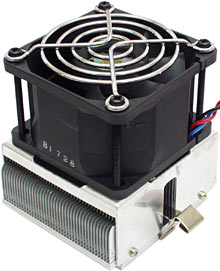
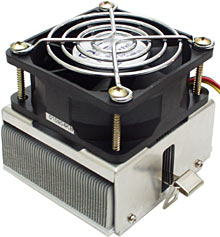
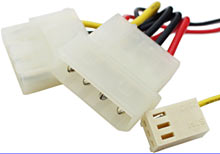
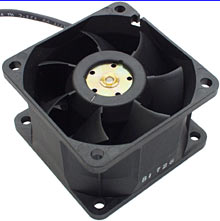

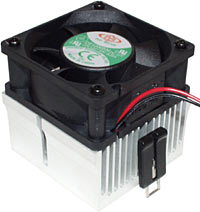
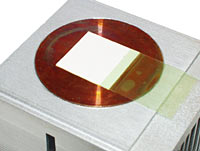

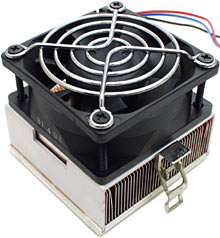
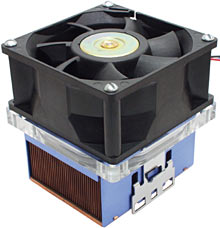
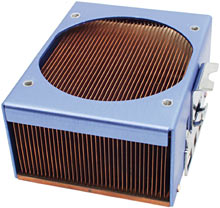

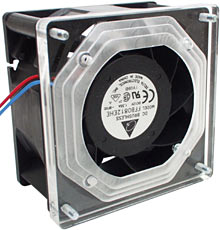
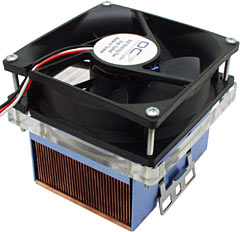



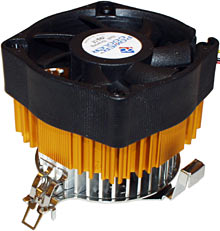
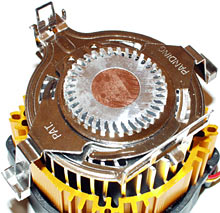

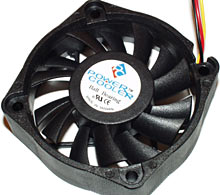
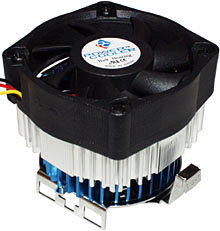
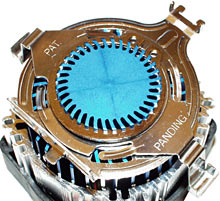
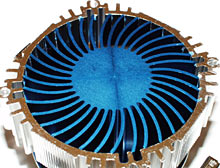
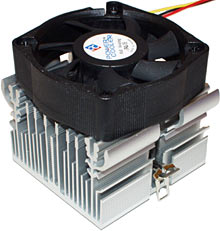
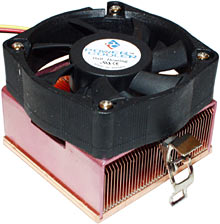
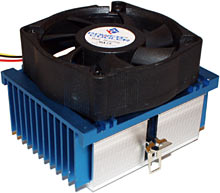




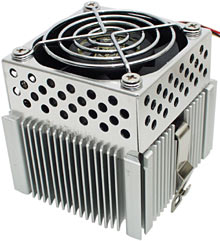
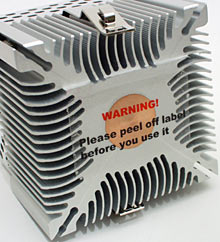


































































































































![[SecureWebs]](images/sw.gif)